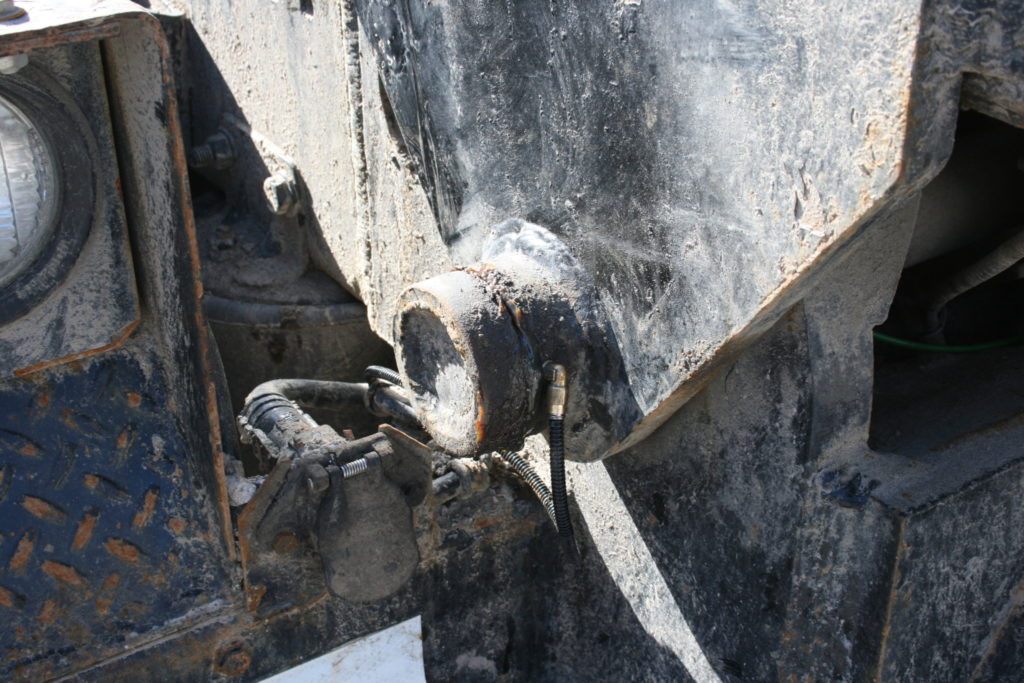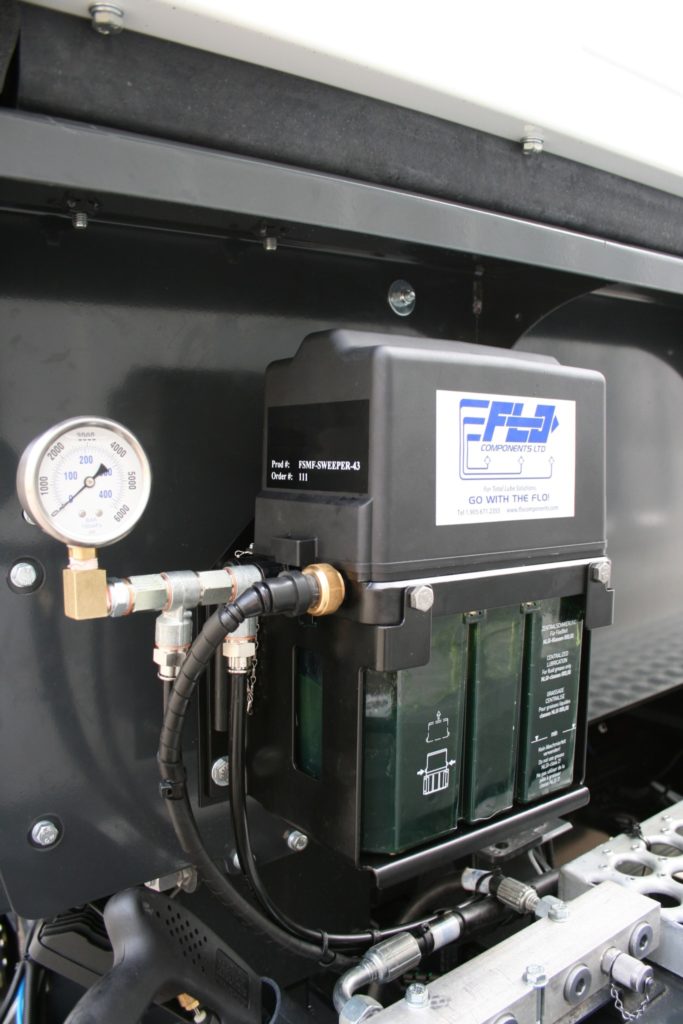Slick Decisions
When running your fleet like a well lubricated machine, attention must be given to all aspects of your preventive maintenance program, including the lube itself. Grease and lubrication are an often overlooked and misunderstood maintenance requirement that when misapplied, can have serious implications for the health of your fleet.

But it may come as a surprise just how complex grease is.
“Grease is an art, more than a science,” said Darryl Purificati, OEM technical liaison at Petro-Canada Lubricants. “The formulations for grease are extremely complex. We often say there’s a formula for a lubricant, it’s really a recipe for grease. You have to follow a certain number of steps, add components in the right way and cook grease appropriately.”
For this reason, many suppliers source grease from third parties, but Purificati said Petro-Canada produces its own at its Mississauga, Ont., plant.
Choosing it
Using moly grease in rolling element bearings – such as wheel bearings, for example – or slack adjusters can cause failure, according to James Booth, commercial sector manager with Chevron. And auto-lubrication systems may have unique requirements, such as no tackifier. Make sure you’re choosing the right grease for your application and don’t fall back on a one-size-fits-all strategy.
“It is best to match up the grease performance characteristics to determine what grease to use,” Booth said.
Mike Deckert, vice-president of Flo Components, said emphatically that all greases are not created equally.
“It’s a common mistake to think that grease is grease,” he said. “Grease has two main components – the base oil and the thickener.”
It’s important to choose a grease that’s designed for the application it will be applied in. The thickener, accounting for about 15% of the product, will affect how the grease performs in certain temperatures and its pumpability in an automatic lubrication system.
“In extreme cold climates, the fleet will need a grease formulated to provide low-temperature performance and good pumpability at low temperatures,” said Booth. “Typically, this requires special low-viscosity base oil and polyurea thickener.”
“A general-purpose grease on a hinge is going to be a lot different than if it’s exposed to elements.”
Darryl Purificati, Petro-Canada Lubricants
Chevron has noted a trend towards synthetic greases, which offer improved performance but come at a higher price point.
Petro-Canada’s Purificati agreed that application should drive purchasing decisions.
“A general-purpose grease on a hinge is going to be a lot different than if it’s exposed to elements. Is it compartmentalized within the unit, or exposed to the elements?” he said.

Organizing it
Grease suppliers use color coding to help end users stay organized, but sticking with a single supplier can make it easier to keep greases sorted.
“As long as the user is buying grease from the same supplier, the user can quickly tell when a different grease has been used,” Booth said. “Specific greases for specific applications on the rigs can extend re-grease intervals, however most fleets find it useful to limit the number of greases and optimize the re-grease interval for simplicity. Many fleets have consolidated to one or two different greases – three if you consider the semi-fluid grease in the trailer axles.”
Keep greases labeled to prevent misapplications in the shop, and ensure any drums are sealed to prevent contamination.
Applying it
When applying grease, ensure the grease gun has an adequate PSI to fill the cavity. Be sure to keep dirt from entering the grease when stored in open drums, Chevron’s Booth added.
Automatic lubrication systems offer several advantages, but they’re not a set-it-and-forget-it solution, warned Deckert.
“Some people think, I can put on an automatic lubrication system and walk away,” he said. “No, what it does is takes the grease gun out of your hand and puts a flashlight and wrenches into them. Someone still has to make sure all the lines are connected. There’s no point having an automatic lubrication system if you have broken lines.”
A complete inspection of the system should be conducted during preventive maintenance inspections and drivers should examine the system as part of their daily pre-trip inspections. Driver training is vital, Deckert said, since “it’s the operators who do the walkarounds.”
“An automatic lubrication system is not the be all and end all,” Deckert admitted. “It’s a tool, and like any other tool, if not maintained it will break down.”
When choosing an automatic lubrication system, ask suppliers questions such as: can I service it myself?; are replacement parts readily available?; is it air- or electrically-operated?; and which components can be connected?
The most common components connected to an automatic lube system are: king pins; spring pins; tie rods; brakes; fifth wheel plates; steering links; and on dump trucks, body hinge points.
One of the biggest advantages of the systems is that grease is applied as needed, ensuring continuous lubrication.
“When you manually lubricate a bearing, within the first hour of operation about 70-75% of what you just put in gets pushed out,” Deckert explained. “So, until the next lubrication interval, you’re running with the bare minimum lubricant, if that.”
The best time to grease a bearing is when it’s moving, which can’t be done by a human.
“If you can apply lubricant while the truck is rolling down the road, you are getting more efficient coverage,” Deckert said. “Depending on when that timer kicks in and the pump operates, that bearing is going to be in a different position so you are getting more efficient lubrication.”

Have your say
This is a moderated forum. Comments will no longer be published unless they are accompanied by a first and last name and a verifiable email address. (Today's Trucking will not publish or share the email address.) Profane language and content deemed to be libelous, racist, or threatening in nature will not be published under any circumstances.